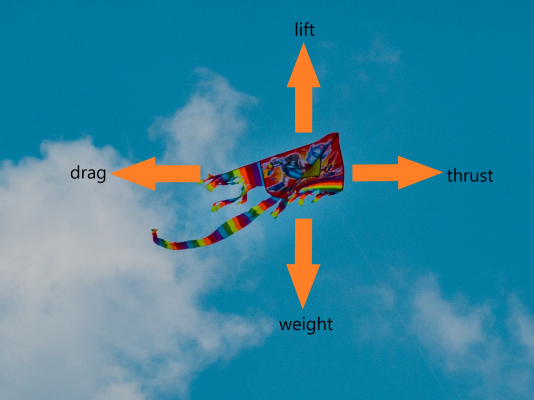Kites at Scotswood Garden
We have been making kites at the Blossom Day to celebrate Basant- a spring time kite flying festival in Pakistan.

Various kites flying on the blue sky in the kite festival
To make our kites we used this kite template and followed these instructions.
We thought you might be interested in the science behind flying your kites.
How do kites fly?
There are four forces of flight: lift, drag, weight and thrust.
What is lift?
Lift is the force that pushes the kite upwards. It is generated by differences in air pressure (the force of air pushing down on a surface). Kites are shaped so air moving over the top moves faster than air moving over the bottom. If the air pressure above the kite is less than the air pressure below it, then the kite is pushed up into the air.
What is weight?
Weight is the force that acts in the opposite direction to lift and is generated by gravity. This pulls the kite downwards towards the earth.
What is thrust?
Thrust propels the kite forwards. A kite creates thrust with the tension of the string and moving air created by the wind or the forward motion of the kite.
What is drag?
Drag is the force that acts in the opposite direction to thrust and is caused by the difference in air pressure between the front and back of the kite and the friction of air moving over the kite.
Balancing the forces
For a kite to fly, the force of lift must be greater than the force of weight.
To keep a kite flying, the forces must be in balance. Lift must be equal to weight and thrust must be equal to drag.






Leave a Reply
Want to join the discussion?Feel free to contribute!